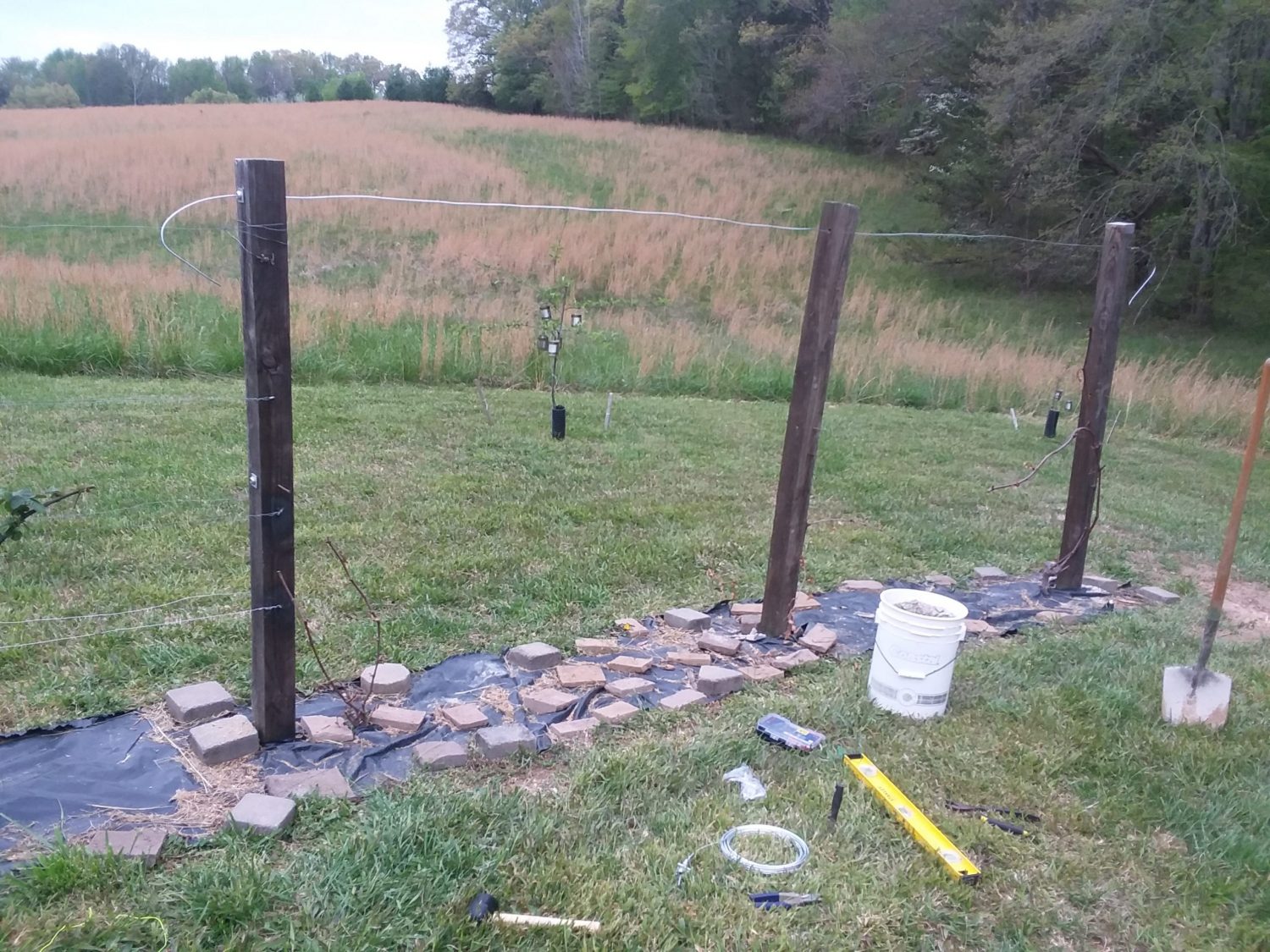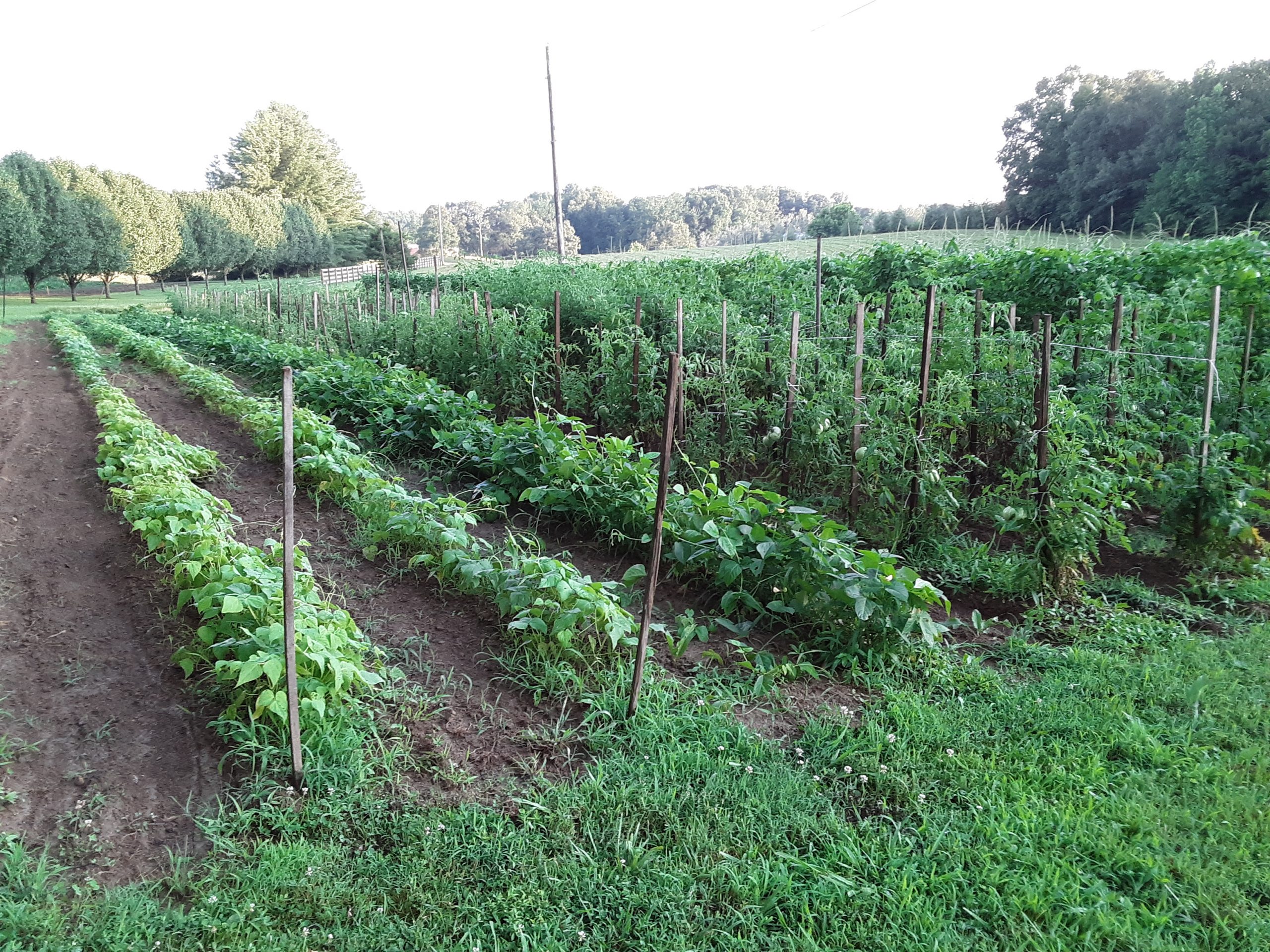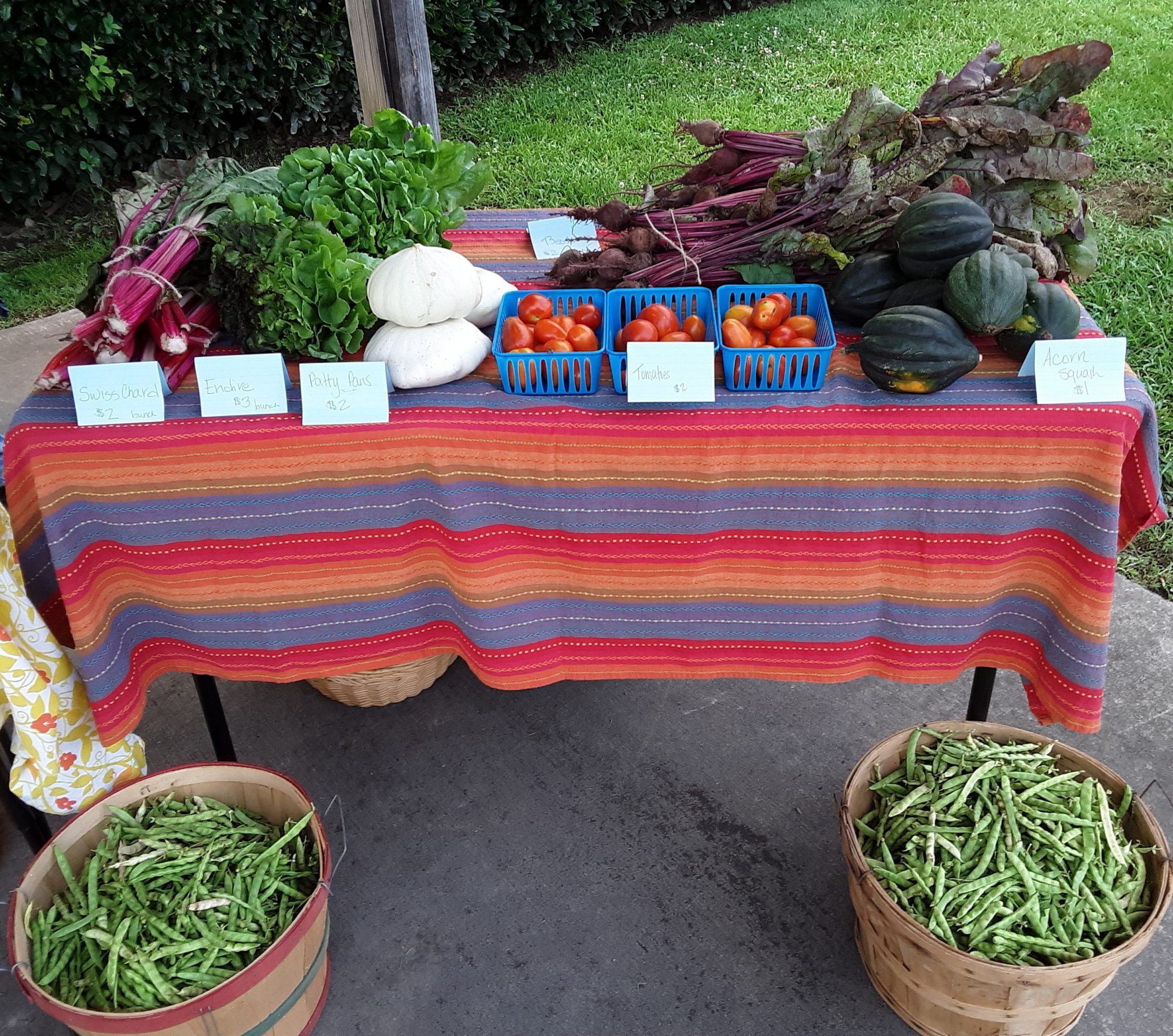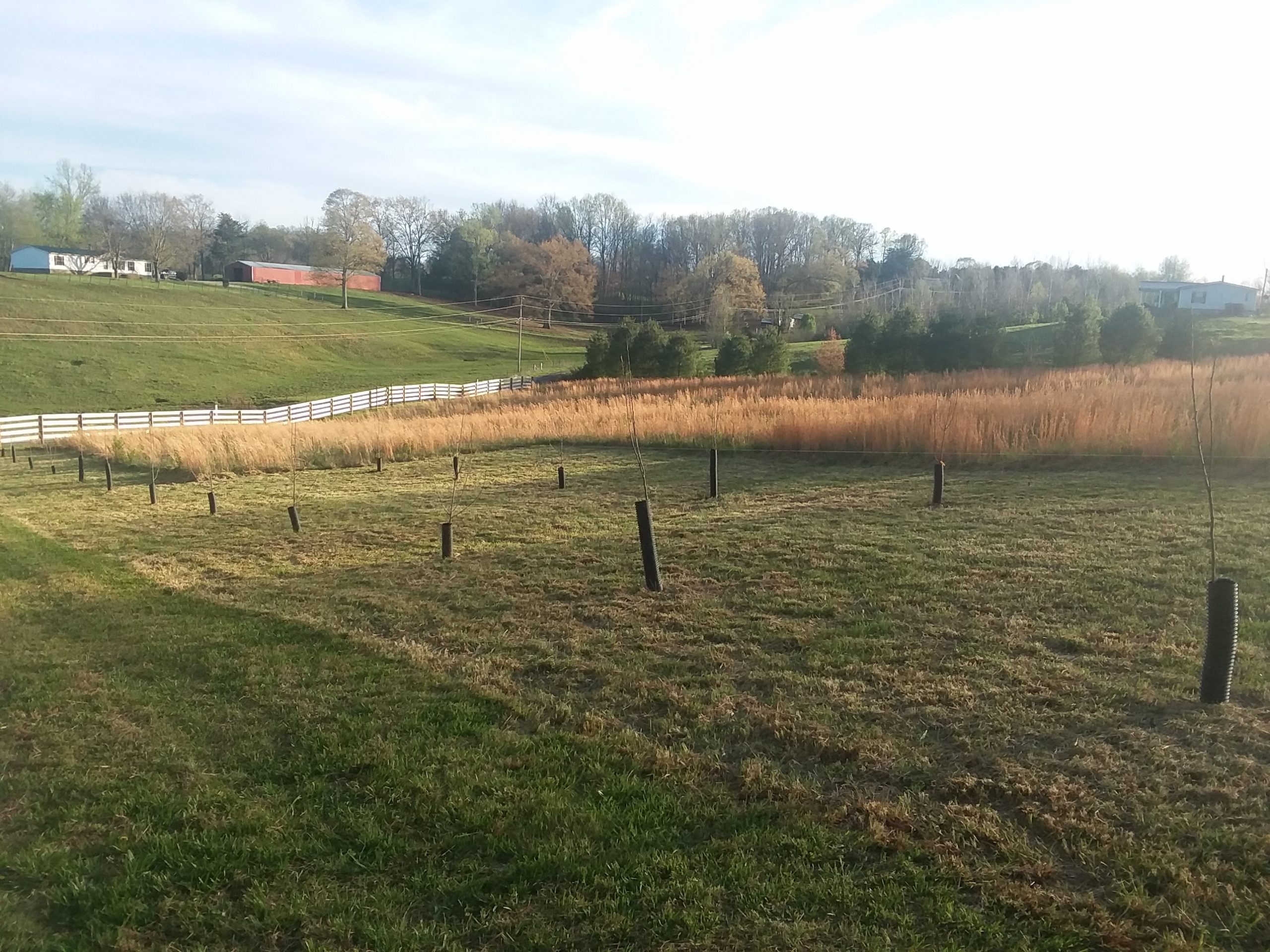Trellises Around the Farm
Around One Lane Farm, a lot of plants require trellising. We use trellises for plant support and to increase the health of our plants. Here, we trellis our grapes, blackberries and several of our garden vegetables. By using mostly things on hand, we are able to recycle materials from other projects. And we are always looking for ways to improve our methods.
Blackberries
Blackberries don’t vine. But they do grow long branches that need support in order to keep them off the ground. For our berry trellis, we used sturdy wire, metal fence posts, wood fence posts and some eye screws. I ran strands of wire on each side of the berries, post to post, in order to encourage and support the long branches growing upward. This allows more sun exposure on all sides of the berries, makes mowing and trimming easier around the base and limits the hiding places for pests. Taller fence posts would have been ideal, but I’m satisfied with the outcome of using what I had on hand.
Grapes
In the beginning, I planted grapes without having any knowledge of what they really needed. I don’t know much more now than I did then but I have tried to improve our trellis system. First, I used some wooden 4 x 4 posts with a wooden type ladder panel on the top. I ran wire vertically down the length of the posts, hoping to inspire the vines to reach the top. This did not work out. The ladder panel rotted as it was not treated wood and the grapes did not reach the top. As I had to replace the trellis this year, I started watching videos and researching different methods. My grapes were planted next to the wooden posts and as the posts would not be moved, I had to adapt the trellis to my setup. I took inspiration from the two tier Cordon training system. We ordered one way wire vices from Amazon to hold the 9 gauge wire. The vice allows for strong tension on the wire to hold the weight of the grapes in full production. The 9 gauge wire we purchased at Lowe’s. Our grapes have suffered a couple of frosts and one hard freeze this year. The grapes have not had much growth and I do not expect fruit. So I cannot say how effective this trellis system will be. Hopefully, next year will allow for a better review.
Vegetables
Brent has taken down a few long rows of woven wire fencing around the property since we bought it. Instead of scrapping it, I have started using it as trellises for our garden vegetables. Last year it replaced bean sticks used for greasy greens and butter beans. It changed my life. The fencing provided so much stability for the beans. We didn’t have to worry about the wind or storms. The fencing improved air flow and sun exposure. And picking was a dream. This year Brent had taken down even more fencing and so we expanded to using it on our beans, tomatoes, cucumbers, squash and zucchini. The fencing replaced almost 400 tobacco sticks that we used last year on the tomatoes. Yes, they were a nightmare especially the cleanup. Although, I am thankful to have had them at the time and glad to use something different now. It took four of us and two hours to put up the six rows of fencing for the vegetables but I am confident it will be worth the effort. My hope is that it will extend the life of the tomatoes and decrease the blight and disease on the vine vegetables. I’ll keep you posted on how everything holds up, literally.
Also, some very exciting news! Brent surprised me on Friday afternoon with the beautiful farm sign you see below. It’s at the entrance of our property. I absolutely love it!

























